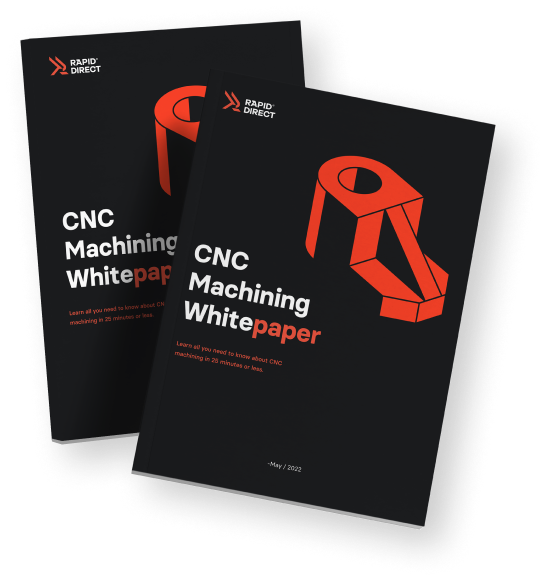CNC machining technology has evolved over the last couple of years from simple machine tools to more sophisticated ones. 5-axis CNC machining is one of the most advanced processes available today. It implements subtractive machining technology to provide infinite possibilities in part creation. This technique uses cutting tools that work on five axes to cut workpieces into desired shapes and sizes.
5-axis machining offers increased accuracy and precision, efficiency, and reliability. The increased number of axes also gives 5-axis milling machines more outstanding capabilities than their counterparts. Moreover, the process allows complete automation and management with Computer Numerical Control (CNC). As a result, many reliable CNC machine shops rely on this technology for precision CNC machining services.
This article covers the basics of 5-axis CNC machining. Here, we will explain what’s 5-axis machining and how the process works, breaking down the different axes. You will also learn the pros and cons of using this machining process and its common applications. The information we provide will help you get the most out of the 5-axis technology.
What Is 5-Axis CNC Machining?
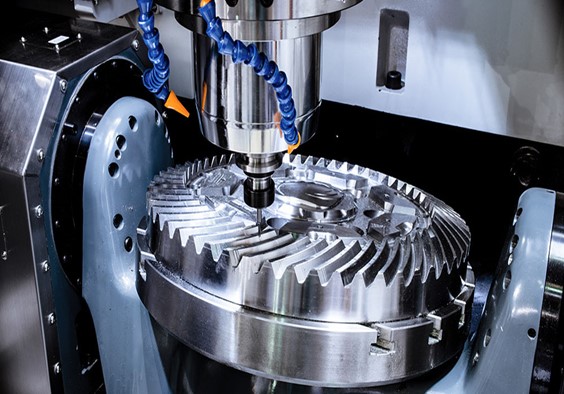
This procedure involves the movement of cutting tools across five axes simultaneously. 5-axis CNC machines offer three linear axes working simultaneously with two rotational axes to achieve intricate parts. This typically adds more tilt to the worktable or tool spindly, allowing for increased rotation and movement.
A 5th axis allows machinists to fabricate up to 5 faces in a single operation. This makes the process highly efficient and precise. It also makes it suitable for creating complex structures and features with minimal setups. Since several parts require consistent machining of 5 faces, this process is becoming more valuable for several industries.
To help understand the axes in a 5-axis CNC milling machine, let’s explain what an axis count entails in CNC machining. A machining axis count is the number of directions the cutting tool (or raw material) can move to create the desired product. For instance, conventional CNC machines have three-axis counts. Consequently, their cutting tools can only move across the X, Y, and Z axes.
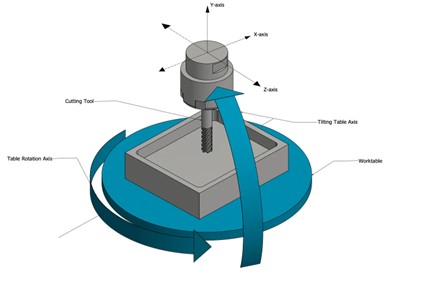
The cutting tool moves:
- Sideways on the X-axis;
- Vertical on the Y-axis;
- Back and forth on the Z-axis.
5-axis machining centers increase the functionalities of the linear axes by tilting (and rotating) the worktable. There are two additional rotational axes called the A-axis and the C-axis. The A-axis is also referred to as the tilting table axis, while the B-axis is the table rotation axis. Including these axes allows the machining of more complex geometries than 2-axis or 3-axis CNC machines. The table below summarizes the movement of the axes.
| Axes | Movement |
| X | Left to right |
| Y | Front to back |
| Z | Top to bottom |
| A | Rotation around X-axis (tilts forward and backward) |
| B | Rotation around Y-axis (tilts from left to right) |
How Does 5-Axis CNC Machining Work?
As with other CNC machines, 5-axis CNC milling machines rely on computer instructions. The programmed instructions for the machine control the movement of the cutting tool and workpiece. The 5-axis machining process starts with creating the 3D CAD model of the desired components.
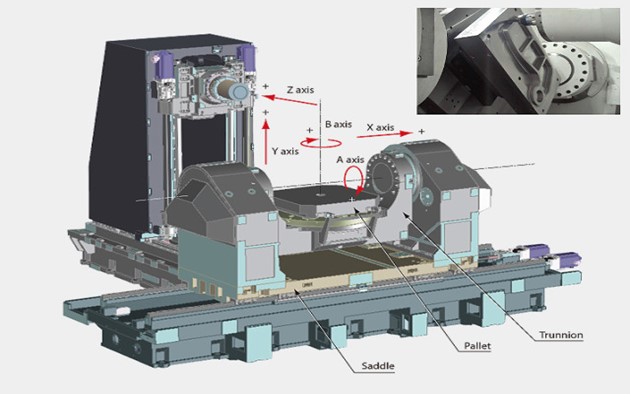
After this, the CAD model is exported into CAM software, converting it into a computer program (G-code). The G-code contains instructions for the CNC machine. It contains tool paths created according to the geometries of the desired part. The instructions control the movement of cutting tools along linear axes (X, Y, and Z). It also controls the direction of the worktable along rotational axes (A and B) to create the desired part.
The process allows the machining of 5 faces of a workpiece with one setup. Therefore, it saves manufacturing time and cost, helping you get your products to market faster. But note that the speed and direction of movement depend on the type and configuration of the 5-axis machine.
Types of 5-Axis CNC Machines
5-axis machines can enhance your machining procedure and improve scalability. These machining centers can come in various types to meet the manufacturing industry.
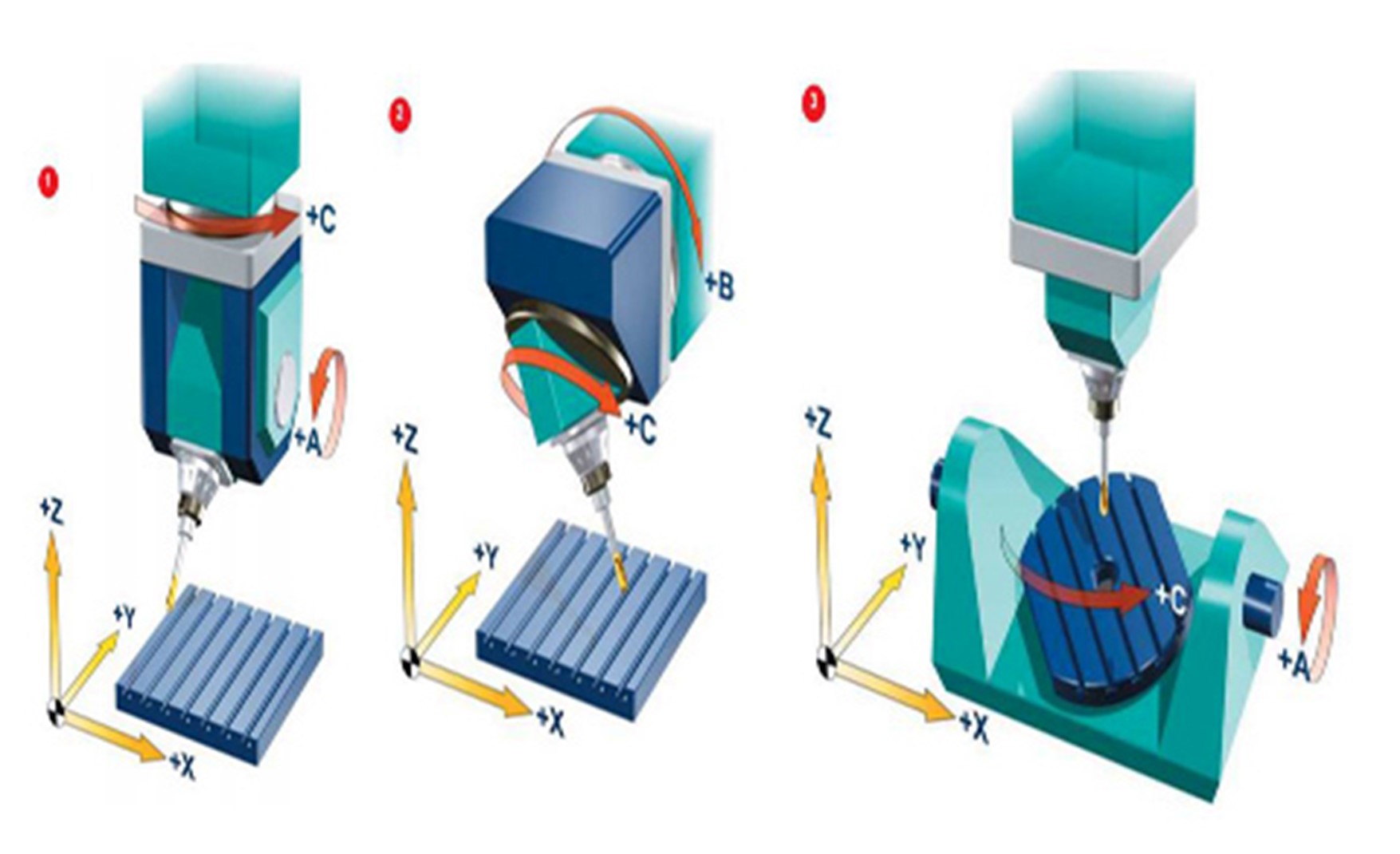
The three major types of 5-axis CNC machines are:
Head/Head
Head/Head machines have rotational axes located in the head. Their 5-axis apex comes on a platform that moves through a fixed worktable, keeping the workpiece in place. Therefore, you won’t need to worry about tool interference on the machine spindle head.
This way, the apex has a higher chance of moving around a workpiece, making them suitable for producing large, heavy parts. The machine table can withstand heavy weights without compromising the accuracy of the rotational aces. However, the design of these machines limits their movements in the rotary axes.
Head/Table
Head/Table machine setup has one rotational axis in the head and the other in the rotary table. Their revolving axis has a restricted range and is situated in the head. On the other hand, the rotary shaft has a wider (unlimited) range and is located in the table.
This setup is beneficial because it can consistently rotate the workpiece without any limit. However, there is a limit to the number of parts it can produce. This is because the workpiece rests on the rotary axis.
Table/Table
In this setup, the 5-axis machines have their rotary axes situated inside the table. Therefore, all rotations occur on the table, and the head does not move. The design of these machines makes them suitable for machining undercuts. Moreover, since the head does not rotate, machinists can easily see how the cuts will happen during the programming stage.
However, the machine arrangement is less suitable for machining large or heavy components. This limitation is due to the table’s inability to withstand too much weight.
5-Axis CNC Machining Configurations | Operation Styles
As mentioned earlier, the movement of axes of the 5-axis manufacturing process depends on the instructions of the CNC program. There are fundamentally two CNC machining operation styles that work with 5-axis:
Trunnion Style
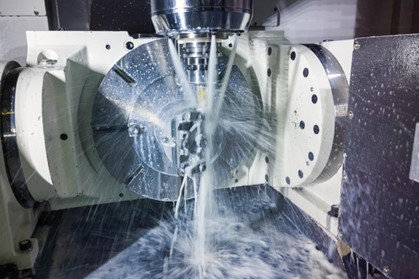
The trunnion-style machine works with the A-axis rotating around the X-axis and the C-axis rotating about the Z-axis. The movement of the table indicates the rotary axes. That is, both rotational axes are located within the table while the head remains stationary (Table/Table). Trunnion-style 5-axis CNC machines are suited to:
- Large work volumes
- Removal of heavy metal without the head moving out of position
- Better undercut capabilities
Swivel Rotate Style
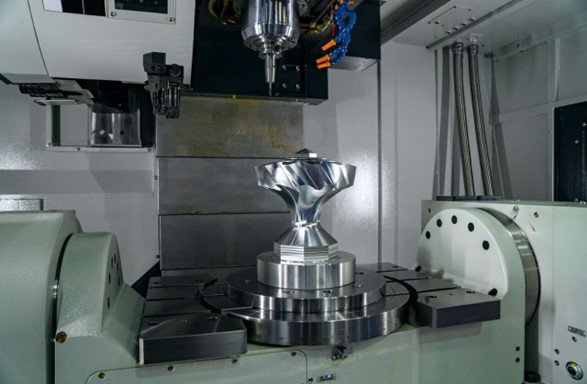
The Swivel rotate style 5-axis CNC machine works with the B-axis rotating about the Y-axis while the C-axis rotates around the Z-axis. This movement differs from the Trunnion style because the table remains horizontal throughout the cutting process. As a result, it can support heavier components. Swivel rotate machines are suited to:
- Machining larger components
- Using shorter cutting tools
Advantages of 5-Axis CNC Machining
The ability to move the cutting tool and workpiece up to 5 faces at the same time offers several advantages to many industries. It allows the cost-effective and efficient fabrication of complex parts.
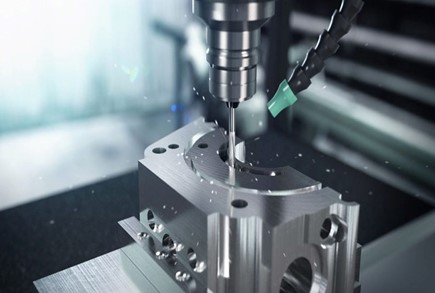
Here are the main benefits of this manufacturing process:
Simple Setup Operations
A 5-axis CNC machine allows the machining of five surfaces simultaneously. For conventional 3-axis machining, you may need several setups to work on parts with several faces. But the 5-axis technology completes the machining of contoured parts and other parts with many faces in a single structure. This allows you to manufacture components with complex geometries with fewer setups.
Machine Complex Shapes (GD&T Call-outs)
The additional rotation in this machining process helps you achieve more complex designs and geometries. The machine allows the seamless machining of arcs and angles that were only previously possible through multiple special fixtures. The 5-axis milling process can rotate parts in a single operation to achieve desired geometries, eliminating the need for complex fixtures.
In addition, the technique pairs excellently with GD&T call-outs to produce datum features in one operation. 5-axis milling is also suited to CNC machining applications requiring surface profile tolerances on complex contoured surfaces.
High Precision and Repeatability
The extra setups involved with manual machining compared to CNC machining cause machinists to lose precise alignments during fabrication. However, minimal setups involved in 5-axis CNC milling reduce the possibilities for errors and improve the accuracy required to achieve superior quality.
The different types of 5-axis machines available today eliminate the need to re-position workpieces at different angles during machining. Thus, you can be sure of improved machining tolerances. Moreover, some machine configurations allow the use of shorter cutting tools. This increases the lifespan of the tools and ensures repeatability.
High Cutting Speed
5-axis machining ensures that cutting tools are tangential to the cutting surfaces. This arrangement allows the removal of more materials each time the tool rotates. Therefore, it lowers the cycle times and overall machining costs.
Smooth Surface Finish
The additional axes in this technique ensure proper orientation of workpieces, bringing them closer to the cutting tool. As a result, you can use shorter cutting tools to create desired shapes. These shorter tools can cut at very high speeds with little to no vibration.
Lesser vibration further lowers the chances of getting “chatter” marks on the finished product. The vertical machining process also improves spindle utilization for machining angled surfaces. This way, you can achieve better surface finishes with this technique and reduce costs and time associated with post-processing.
Save Cycle Time and Money
5-axis machined parts are often completed in a single operation because of the high-speed advantage of the process. The single setup involved helps save time and money. Moreover, employing shorter cutting tools with longer lifespans eliminates the need for constant tool replacement, saving money and time.
In addition, the 5-axis milling process can be automated, reducing human operations and labor requirements. This reduces labor costs involved with the process. Therefore, 5-axis CNC machining is a cost-effective solution that accelerates your products to market.
Disadvantages of 5-Axis CNC Machining
Despite the many advantages of the 5-axis CNC technology, its use is not well suited to some applications.
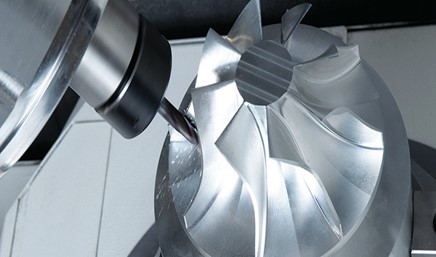
Some of the setbacks of this process include the following:
High Initial Costs
The cost of purchasing a 5-axis CNC machine and its essential software is high. It is much higher than what is needed for 3-axis machining centers. Likewise, the maintenance requirements of the machine are also quite challenging than conventional machine tools. This aspect also directly increases the machining costs of 5-axis machined parts.
Difficult Programming
The two additional rotational motions and the spatial trajectory of their movement are abstract and complex. For instance, to process a free-form surface, you will need to:
- Pass multiple coordinate transformations;
- Go through complex spatial geometric operations;
- Consider the coordination of each axis’s motion.
All these are necessary to avoid collision and interference and ensure the right amount of interpolation motion. Therefore, getting the desired machining precision, accuracy, and surface quality involves greater programming difficulty.
Higher Requirements for Operators
5-axis CNC milling is an advanced technology involving advanced programming, machine setup, and operations. Therefore, the process requires highly skilled technical operators. This often translates to increased labor costs.
Get the Most Out of 5-Axis CNC Machining
The under-utilization of 5-axis capabilities is a common occurrence. Some operators do not understand the full capabilities of the machine. Others may not have the programming knowledge for a cutting-edge operation.
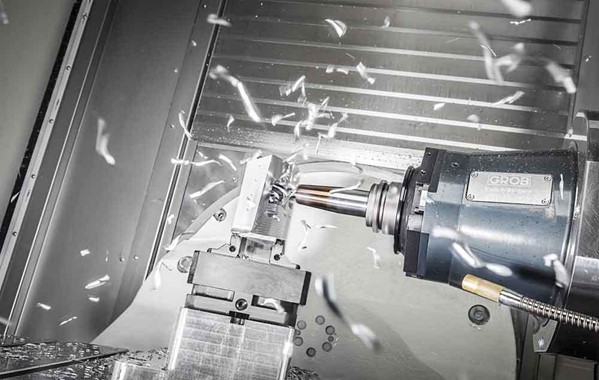
The following tips will help you take advantage of the advantages of this manufacturing process:
Choose the Right Controls and Software
Before deciding to use the 5-axis technology, try to get enough information. Analyze the data from the customer, checking for accuracy and correctness. Take a close look at the component and check whether there is a need for a pretest.
Simulation software will be useful for verifying the process before translating the CAD design into a CAM model. The software will help monitor the tool’s length, its interference, and the part’s size. It’s needed to invest in programs and software that complement the 5-axis machine’s capabilities. Additionally, it would be best to do a cost analysis to ensure you’re using the most cost-effective process for the job.
Avoid Collisions
Creating 5-axis tool paths often involves a general trade-off between high-speed cutting and reducing risks of crashing. Collisions may lead to defective components, damage the machine, or cause you to scrap parts.
Fortunately, employing certain software tools can eliminate this. The software program will look ahead to check every move of the tool to see if it will run into anything. As long as the CNC machining design is modeled correctly, the software will see the collision before it happens.
Choose a Tool-detection System
5-axis CNC machining ensures high productivity but may also increase the risks of errors. This may be in the form of using the wrong tool or a broken cutting tool. Using a tool-detection system can minimize such errors. This system will help analyze the tool you want to use, ensuring you choose the right one.
Run the Kinetics
Running kinetics will achieve the specifics for every feature with increased accuracy. It will help you understand the right positioning of the cutting tools in relation to the axes’ turning points.
Common Applications of 5-Axis CNC Machining
This manufacturing process is suitable for applications in several industries requiring high precision, complex shapes, and tight tolerances.
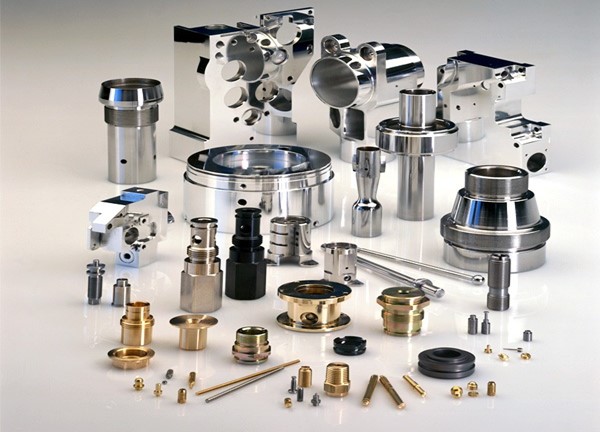
The typical applications are:
Aerospace Components
The aerospace industry requires components with organic shapes with contoured edges and compound shapes. Aerospace parts are unique and geometrically intricate, making 5-axis machining the ideal technology of choice. This process achieves a high level of detail and reduces the need for re-fixturing of the cutting head. Thus, parts for aerospace applications remain as precise as possible, meeting industry standards.
Medical Equipment
Quality and precision are non-negotiable when it comes to manufacturing medical equipment. The high-precision capabilities of the 5-axis fabrication process assist in the production of implants, devices, and other equipment to meet rigorous healthcare requirements. Most of the components are small and intricate. Others are complex electrical scanning and monitoring equipment. 5-axis technology offers an efficient and cost-effective means of producing these components.
Energy Production
The energy industry often requires complex and advanced components, including solar power systems and power stations. The rapid emergence of 5-axis machining ensures CNC precision machining of detailed and specific parts for energy equipment. These parts are machined to be durable and provide stability to workspaces.
Why Choose 5-Axis CNC Machining Over Other Techniques
Deciding between 5-axis machining centers and other techniques can be pretty challenging. There are many factors to consider to ensure you make the best choice. Here’s a comparison between this technology and other methods.
5-Axis CNC Machining vs. 3+2-Axis CNC Machining
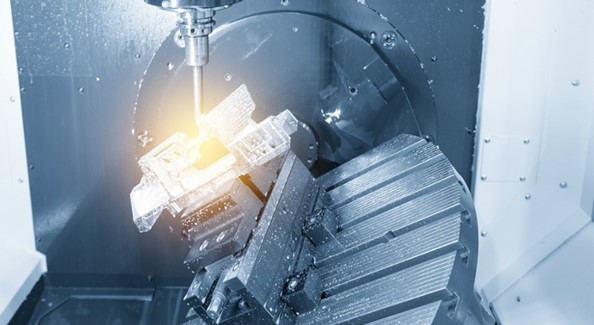
Many people tend to confuse these two techniques. 5-axis CNC machining, also known as continuous 5-axis machining, involves the continuous rotation of cutting tools along five axes. In contrast, 3+2-axis machining executes a 3-axis program. During this process, the cutting tool is locked at an angle. The two rotary axes determine this angle.
The main advantage of 5-axis over 3+2-axis CNC machining is speed. The latter involves constant stopping and starting of the machine between each tool orientation. However, the former completes the cutting in a single operation. Furthermore, 5-axis machining is more suitable for complex surfaces, while 3+2-axis CNC machining works mainly for plane processing.
Since 5-axis machines require lesser clamps and no special fixture, the machining cost is lower than with 3+2-axis counterparts. However, you should note that the programming involved with the 5-axis technology is much more complicated than the 3+2-axis machining.
5-Axis CNC Machining vs. 3D Printing
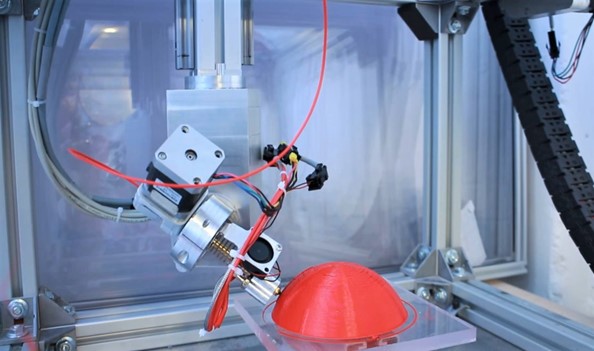
Unlike the 5-axis CNC machining process, 3D printing is an additive manufacturing process that involves building components one layer at a time. While these technologies differ in their mode of operation, there are more overlaps in their application. They both offer high accuracy, fast turnaround, increased repeatability, and excellent surface finishes.
3D printing does not require special fixtures or tooling. As a result, the initial setup cost is also minimal. However, 5-axis CNC machines offer better dimensional accuracy than 3D printing. They can machine small and very large parts accurately. Getting extremely tight tolerances with 3D printing will require additional post-processing operations.
Work With RapidDirect for 5-Axis CNC Machining
With 5-axis machining explained, you now comprehensively understand 5-axis CNC machining. It’s time to take charge of your manufacturing experience. 5-axis CNC machines simplify fabrication processes, ensure faster and cost-effective production, and improve precision and accuracy. However, they are not ideal for all designs. For instance, 3- or 4-axis CNC machines may be more suitable and cost-effective for precise cutouts, holes, and cavities.
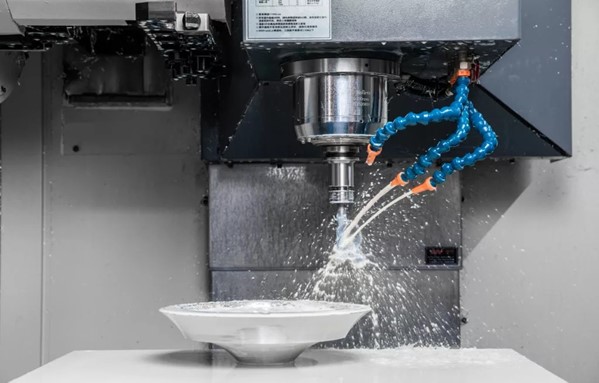
Therefore, it is important to contact a CNC machining expert before starting your project. RapidDirect is a leading CNC machining services provider across the globe. We own several 5-axis CNC machines, including Hermle C650, C400, C250, C42, and C22. Our strong 5-axis CNC machining services can manufacture high-precision CNC machined parts with high quality, fast lead time, and competitive pricing.
Our highly skilled technicians also offer technical support to help you choose between our range of machining technologies and production-grade materials. Contact us today, so we can discuss your project. Upload your design file on our instant quotation platform to get an instant interactive quotation with free DFM analysis.
